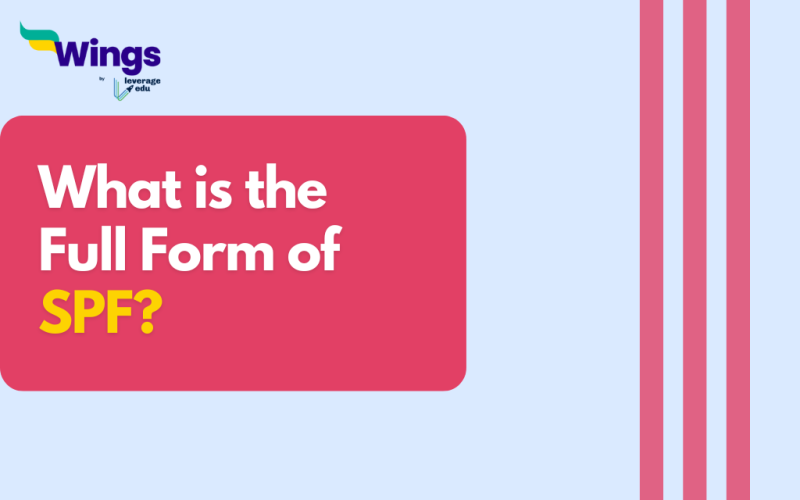The full form of SPF is “Sun Protection Factor.” These are numbers that indicate how well a sunscreen can actually protect a person’s skin against a sunburn. Additionally, it is not an indicator of how long a person can stay in the sun; rather, it indicates how much longer it takes for untanned skin to start reddening with sunscreen applied as opposed to how long it takes for skin to start reddening without sunscreen.
In the scorching heat of the sun, it is considered to be beneficial for everyone to carry sunscreen. This is because prolonged contact with ultraviolet (UV) rays can result in a wide range of skin problems, including an increased likelihood of developing skin cancer, sunburn, and premature aging. Additionally, the sun protection factor (SPF) acts as a shield and prevents these harmful rays from penetrating deep into your skin, which can cause permanent damage. Let us know more things apart from the full form of SPF.
UV Rays and its two types
Table of Contents [show]
The sun and artificial sources, such as tanning beds, both emit ultraviolet (UV) radiation, which is a type of radiation that does not ionize the body’s own cells. It is possible for it to cause health risks, despite the fact that it does have some positive effects on people, such as the production of vitamin D.
Ultraviolet Rays can be divided into two types:
- UVA Rays:These are called “Aging” rays. They penetrate your skin, causing the appearance of wrinkles, fine lines, and premature ageing. UVA rays are the cause of those unsightly age spots that may make you seem older than you are.
- UVB Rays: These are usually referred to as “burning” rays. UVB rays primarily affect the outermost layer of your skin, causing sunburn. Extended exposure to UVB rays might increase the chance of developing more serious skin problems, such as skin cancer.
How can SPF be defined as skin’s trusted companion?
There are a number of reasons why SPF is defined as a person’s skin best friend:
- Act as a shield for skin cancer prevention
- It is a yearly necessity.
- Helps in maintaining a youthful skin.
- It also helps in negotiating sunburn.
What are the different types of SPF?
You are probably aware of those numbers that are printed on the bottles of sunscreen, right? sun protection factor (SPF) 15, 30, 50, and higher. The amount of protection that your sunscreen provides against ultraviolet B rays is represented by these numerical representations. You can anticipate a higher level of protection from the sun if the sun protection factor (SPF) value is higher.
SPF 15:
With a sun protection factor (SPF) of 15, the sunscreen offers protection against sunburn by blocking approximately 93% of the sun’s UVB rays, which are known to be harmful. You will be able to extend your time spent in the sun by approximately 15 times before you experience the first signs of sunburn if you use this product. It is recommended, however, that a higher sun protection factor (SPF) sunscreen be used for prolonged sun exposure or intense sunlight in order to provide more robust protection.
SPF 30:
Sunscreen with a sun protection factor of 30 is effective in preventing sunburn by blocking approximately 97% of the sun’s UVB rays. Because of this protection, you will be able to remain in the sun for approximately thirty times longer before you notice any signs of sunburn. It is an option that is suitable for use on a daily basis and when exposed to daylight of a moderate intensity.
SPF 50:
By blocking approximately 98% of the sun’s harmful UVB rays, sun protection factor (SPF) 50 provides a high level of protection against sunburn. When compared to the situation in which you do not use any protection, you will be able to stay in the sun for approximately fifty times longer before you experience sunburn after using this protection. Particularly if you have fair or sensitive skin, this level of sun protection factor (SPF) is an excellent option for prolonged exposure to the sun and activities that take place outside.
FAQs
UVA rays penetrate deep into the skin, causing wrinkles and premature aging. UVB rays primarily affect the outer layer, causing sunburn and increasing the risk of skin cancer.
SPF indicates the level of protection a sunscreen provides against UVB rays. For example, SPF 30 means it takes 30 times longer for your skin to burn compared to if you weren’t wearing sunscreen.
SPF shields your skin from harmful UV rays, reducing the risk of skin cancer, premature aging, and sunburn.
Did you like reading about the full form of SPF? If yes, you can read more similar blogs from our A-Z list of full forms!
 One app for all your study abroad needs
One app for all your study abroad needs















 45,000+ students trusted us with their dreams. Take the first step today!
45,000+ students trusted us with their dreams. Take the first step today!
